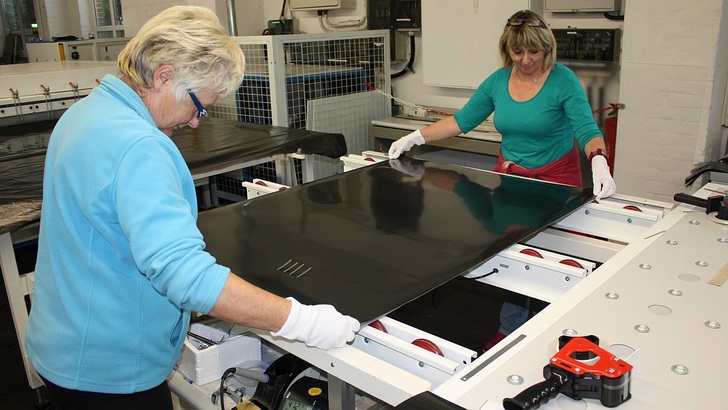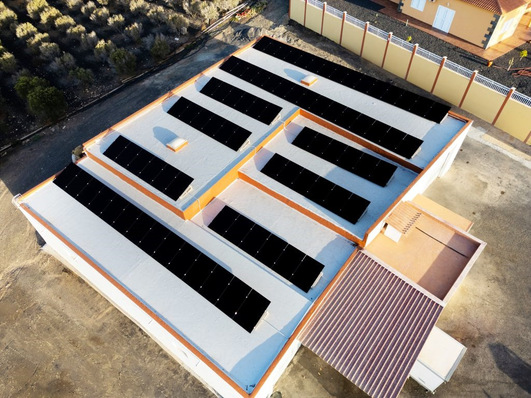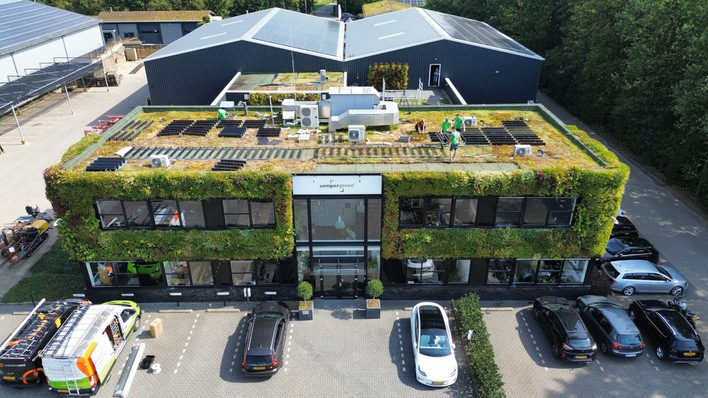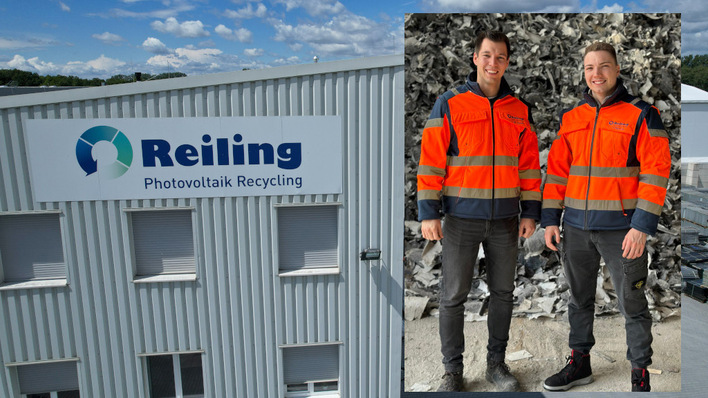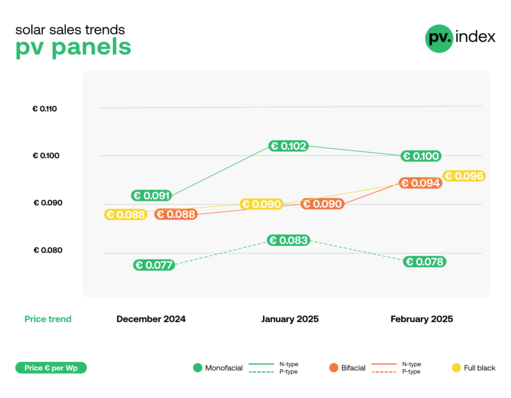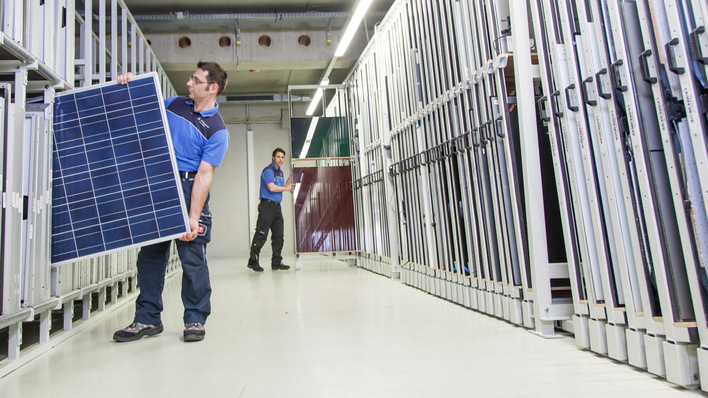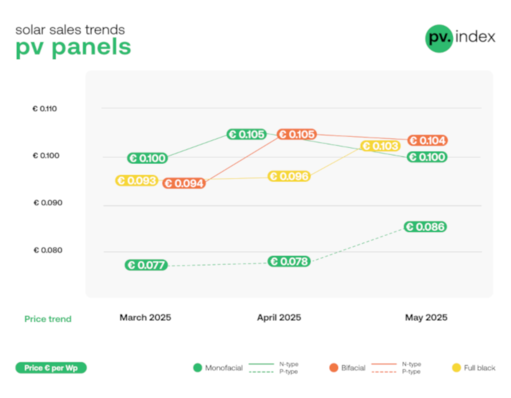In some cases, it might make sense to repair faulty components or have them repaired by appropriate service providers. If the product needs to be exchanged for an identical component, there are two ways to go about it: If the solar panel is no longer to be had as a brand-new component, it may be available second-hand. Or it has to be replicated according to the original’s electrical and mechanical specifications.
Hot spots or micro-cracks
In the case of faulty solar panels, it frequently is the solar cells that get damaged over time – by hot spots or micro-fractures – whereas the panel itself, the lamination, the waterproofing and the frame, might still be intact. Whether repairing panels is worth it, often depends on the specific installation, and on how it was set up.
Roof-integrated systems need to be completely dismounted, even if only one or two panels are under-performing, because such an installation is only waterproof in its entirety. In such a case, it might be worth it to check and clean all the panels. Loss of output can often be attributed to dirt.
Solar Panels out of sale
It is not uncommon for installing companies to take over the maintenance of an installation which they themselves have not installed and for which proper documentation is not available. In such a case, both the maintenance provider and their customer are on the safe side by checking the solar panels. However, this does not necessarily have to result in their repair – not to mention replicating panels that are no longer available on the market.
Repairing is an option for older panels that are no longer for sale. It used to be commonplace to have very small cells four or five inches on a side as well as panels consisting of only four cells. Companies specialising in repairing solar panels can produce small runs of practically any panel. However, repairs may only be viable starting at a certain amount, as this is done by small manufacturers and requires manual labour and experience.
Trade in the internet
It is usually insurance or installing companies with positive experience with repairs that commission the repairing of solar panels. There are also online platforms (such as Secondsol or Solarpur) that trade in decommissioned and repaired panels.
Solar panels often develop faults because martens or other rodents live near the installation. As well as chewing on the cables, these love to eat the soft rubber of the panel connectors. The greater the number of faulty panels that can be repaired in one order the better, because the technician needs to remove each panel and keep it on a transport pallet.
The rest is taken care of by the panel manufacturer. The status of each order can always be tracked. At first, panels are cleaned, tested in the flasher unit and any damage documented. The service provider then puts together a quote for repairing faulty connectors or other defects, which can include damage to the backsheets or other things. Some damage will turn out to be beyond repair, in which case they will put together a calculation for replicating these panels.
The terms of the warranty
The decision whether to commission repairs is made by the installing company, their customers or the insurance company. For an insurer it may often be better to overhaul a faulty panel, because, depending on the contract, they might be required to pay out a certain residual claim, which they had guaranteed. If the panels are no longer for sale, the only options are repairing and replicating, with repairs usually being less expensive than replicating.
It can also be sensible to refurbish entire strings of a defective installation or rebuild it completely. It is also possible to buy used panels. However, these are usually not under warranty.
Regardless if it was lightning strikes, martens or a damaged frame: Generally speaking, there is a variety of ways to restore or replace faulty panels.
- Replacement of defective frames and connectors,
- repairing faulty soldering, diodes as well as wires, connectors and sockets,
- repairing damaged backsheets,
- cleaning of PV panels,
- measuring under STC to determine voltage, current and output,
- performing a high-voltage test,
- commissioning and professional packaging of the shipment.
Get it back as soon as possible
The goal is to get the affected PV installation back to delivering the desired yield as soon as possible. Insurance companies frequently determine that older panels should be repaired. Instead of replacing all the panels it can be economical to specifically take the affected panels off the roof in order to repair them manually.
Therefore, in case of damage, it is worth it to first contact the insurance company. They will always try to repair any damage in the safest and most cost-effective manner possible. Some insurers have lists of repair shops that take on a particular job.
Done within two or three weeks
The experts appointed by the insurer are are also a part of the decision whether a repair or replicating of panels is possible or sensible. Because in the end, the customer has a right to have any damage to the installation restored to the way it was before. The insurer has to accept this solution in order for the installation’s warranty to remain valid.
Repairs are usually complete within two or three weeks. After that, the solar panels can be reintegrated into the installation. Repaired panels are given a two-year warranty. Repairing glass damage is more difficult to.
Faulty connecting sockets
One special case are the connecting sockets of solar panels. About half of the panels that required repairing in Germany had defective sockets. This is often a production fault where the warrantor has in the meantime fallen into insolvency.
Repairing defective sockets is generally straightforward by replacing the socket. This costs about 50 euros a piece, with one socket coming in at about seven to eight euros. It costs about 20 euros to unsolder an individual cable, which means it is simpler to replace the entire socket.
Corrosion is a key factor
Corrosion is also a key factor with connecting sockets. It raises the internal resistance of the socket which then becomes hot. This in turn causes the plastic to melt and noticeably deform. Humidity as well as salt in the air in coastal regions can stimulate corrosion.
In solar parks, faulty connecting sockets can be a massive problem, affecting thousands of panels rather than just a hand full. And so some service providers have developed procedures to exchange and repair sockets in situ within the solar array. This saves on disassembly and transport to the repair shop. However, such a procedure has to be closely coordinated and approved by the panel manufacturer, because it interferes with the performance warranty for the solar panels.
The Scheuten case
The scope that such processes can have is best illustrated by the following example: The Dutch panel manufacturer Scheuten Solar were having issues with their connecting sockets. Scheuten Solar has since become insolvent, while 650,000 of their solar panels are urgently posing a fire hazard. If the connecting sockets corrode, they can overheat and produce electric arks. With the Freiburg-based Solar-Fabrik, which has also since become insolvent, there is a similar problem involving connecting sockets.
If the manufacturer of panels is still in business, they need to recall such products and cover any related costs. To repair a panel including connecting socket can cost them between 35 and 45 euros, depending on the type of socket. This is what their warranty can cost them. (Heiko Schwarzburger)
Stay informed, get our weekly newsletter. Register here: http://www.pveurope.eu/Newsletter
Related news:

